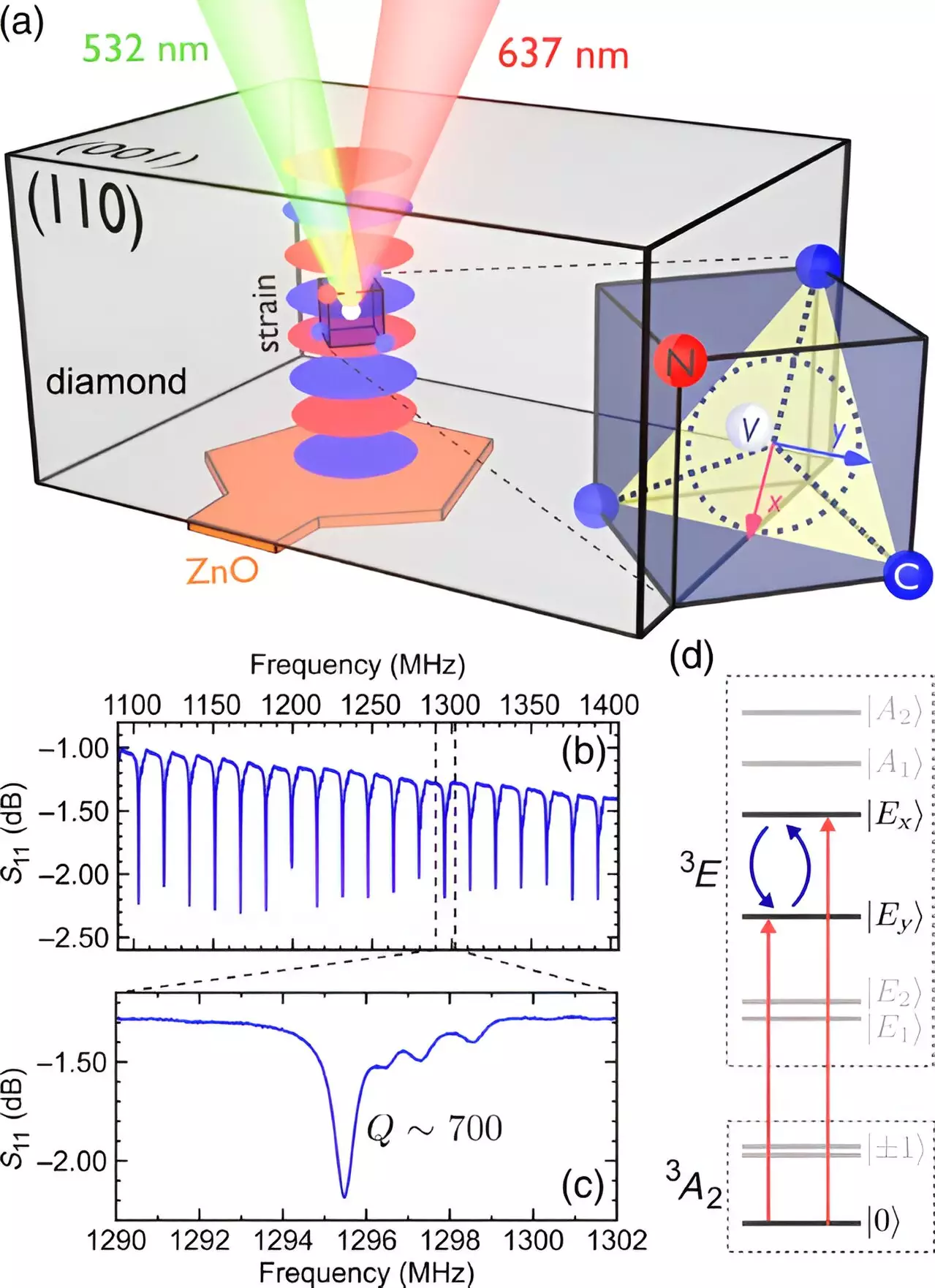Quantum information technology is an ever-evolving field that requires constant innovation in order to control electrons and other microscopic particles. Recent research conducted by Cornell University researchers has shown that acoustic sound waves may hold the key to manipulating electrons as they orbit lattice defects in diamonds. This groundbreaking technique has the potential to improve the sensitivity of quantum sensors and revolutionize the realm of quantum devices.
In the study titled “Coherent acoustic control of defect orbital states in the strong-driving limit,” Gregory Fuchs and his team utilized acoustic sound waves to induce “quantum jumps” between electron orbits. By engineering a setting where sound waves can drive these transitions, the researchers were able to demonstrate coherent control of a single electron inside a diamond chip. This innovative approach opens up new possibilities for manipulating electrons at the quantum level.
Qubits, the quantum analog of classical computer bits, must remain coherent in order to be useful. However, maintaining this coherence is a challenging task due to environmental fluctuations. Previous techniques, such as spin resonance using microwaves and magnetic fields, have been used to extend qubit coherence times. Fuchs and his team sought to apply similar principles to the acoustic domain to enhance the coherence of electron orbitals. By acoustically driving the orbital states and utilizing spin resonance techniques, they were able to investigate the coherence of these states in a novel way.
The research conducted by Fuchs’s team focused on the nitrogen-vacancy (NV) center, a defect in diamond crystal lattices that serves as a crucial qubit for sensing and quantum networking. By developing new tools to combat environmental fluctuations that lead to spectral diffusion, the researchers have made significant strides in understanding how the NV center interacts with noise sources. This knowledge is vital for ensuring the stability of optical transitions in quantum networking applications.
The success of this project highlights the importance of collaboration between different research teams. Experimental techniques developed in Fuchs’s lab were complemented by theoretical analysis provided by the Department of Physics. This collaborative approach not only led to groundbreaking discoveries but also provided valuable insights into the potential applications of acoustic sound waves in quantum information technology. The innovative use of acoustic waves to excite electrons demonstrates the immense potential of this research in shaping the future of quantum technology.
The research conducted by Cornell University researchers showcases the significant role that acoustic sound waves can play in controlling electron motion at the quantum level. By exploring new techniques to manipulate electron orbitals and enhance qubit coherence, this study opens up a world of possibilities for advancing quantum information technology. The collaborative nature of the research highlights the importance of interdisciplinary cooperation in solving complex scientific challenges.


Leave a Reply